|
Displaying items by tag: Research
In an attempt to attract visitors from outside the region, a number of Pittsburgh institutions have embarked on a joint endeavor called the Pittsburgh Art and Architecture Tour. The Andy Warhol Museum, the Mattress Factory Art Museum and two seminal residences designed by Frank Lloyd Wright, Fallingwater and Kentucky Knob, make up the tour.
The arrangement was made possible by a planning grant from the Pittsburgh-based Benter Foundation, an organization aimed at making the city more culturally and socially vibrant. The Warhol Museum’s Director, Eric Shiner, said, “We are very excited about this collaborative effort to increase cultural tourism to the Pittsburgh region.”
The Pittsburgh Art and Architecture Tour’s website, www.pghtrip.org, offers sample itineraries by car, air and public transportation that include the best places to stay, eat and visit while in the area.
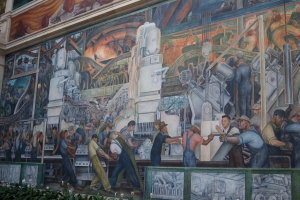
Thanks to a grant from Bank of America’s Art Conservation Project, the Detroit Institute of Arts has embarked on a research endeavor focused on examining and digitally photographing 13 full-scale preparatory drawings by Diego Rivera for his Detroit Industry murals. The drawings have not been viewed since 1986 and have never been photographed. The project, which started on July 22, 2013, will last through August 2, 2013 and will include any necessary conservation work on the drawings.
Rivera gave the drawings, which are housed in a climate-controlled custom storage in the museum, to the DIA after he completed his monumental Detroit Industry murals in 1933. The series of frescoes, which features 27 panels surrounding the museum’s Rivera Court, depict the then state-of-the-art Ford Motor Company River Rouge Plant. The murals stirred up controversy following their completion and critics deemed the works blasphemous, vulgar, un-American and Marxist propaganda. While members of the Detroit community called for the destruction of the murals, commissioner Edsel Ford and DIA Director Wilhelm Valentiner defended the murals’ right to exist.
Following the research project, 5 of the 13 panels will be go on view at DIA as part of an exhibition of works by Rivera and his wife Frida Kahlo created during their time in Detroit.
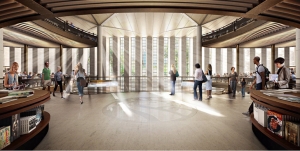
Back in December 2012, officials at the New York Public Library released a number of important details pertaining to their $300 million renovation. Part of the project involved clearing out the back portion of the library, which is housed in a landmark building on Fifth Avenue in Manhattan.
The plan has 1.2 million volumes being relocated to a storage space under Bryant Park as well as another facility in Princeton, NJ. Most of the exiled books are now available digitally and library officials purposely chose rarely requested books to be relocated. With the newly freed up space, the architecture firm Foster & Partners, plan to create a four-level atrium with curving balconies filled with bookshelves and reading tables overlooking Bryant Park. It will be the first time since the library was built in 1911 that patrons will be able to see the park.
The library received a fair amount of criticism after announcing their plans to renovate and Advocates for Justice, a nonprofit organization, has just filed a lawsuit on behalf of five preservations and scholars. The plaintiffs are arguing that the library is violating its charter and the state’s constitution by removing the aforementioned books. The suit also claims that the library failed to conduct an environmental impact review for the renovation plans. While the library recently applied for building permits, officials claim that they are for “preliminary work” and that the designs have not been finalized.
The busiest public research library in the United States, the New York Public Library is expected to span 100,000 square feet after renovations are complete. Construction is slated to begin this summer and is expected to last until 2018.
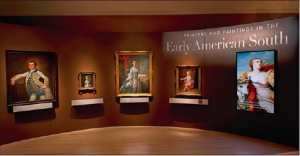
The two leading decorative arts institutions in the South are embarking on a new level of collaboration between their organizations. The Art Museums of Colonial Williamsburg (the Abby Aldrich Rockefeller Folk Art Museum and the DeWitt Wallace Decorative Arts Museum) and the Museum of Early Southern Decorative Arts (MESDA) at Old Salem Museums & Gardens have entered a five-year agreement for reciprocal extended loans. The museums have already collaborated on the recently opened exhibition, Painters and Paintings in the Early American South (on view through September 7, 2014) at the Arts Museums of Colonial Williamsburg. With nine major paintings MESDA is the largest single lender to the exhibition, while select objects from the Art Museums of Colonial Williamsburg are already on display at MESDA.
Many of MESDA’s forty objects on loan to Colonial Williamsburg will be featured in a new, long-term exhibition opening at Colonial Williamsburg’s DeWitt Wallace Decorative Arts Museum in January 2014. A Rich and Varied Culture: The Material World of the Early South will feature materials made in or imported to the South before 1840. The two museums have already begun discussions on several ways in which they can broaden the collaboration. Ideas include research exchanges, conservation, joint exhibitions and, potentially, joint publications. Further evidence of the collaboration will be seen in Colonial Williamsburg’s 66th annual Antiques Forum, February 14–18, 2014. Tentatively titled “New Findings in the Arts of the Coastal South,” the program will feature multiple speakers from both institutions as well as a number of experts from museums and universities across the nation.
IN ADDITION
This May MESDA honored Richard Hampton Jenrette with the first ever Frank L. Horton Lifetime Achievement Award for Southern Decorative Arts. A native of Raleigh, North Carolina, during the past forty years Jenrette has owned and restored a dozen historic properties. He has retained six of them and furnished each with period antiques, many original to the houses. Threads of Feeling, on view at the DeWitt Wallace Decorative Arts Museum, Colonial Williamsburg, through May 2014, displays the Foundling Hospital of London’s eighteenth century record books that retain textile tokens used to identify babies left in its care. The exhibit and catalogue provide insight into social and textile history and is the only American venue. October 20–22, 2013, Williamsburg will host a symposium to explore the objects in context. For information on the institutions, exhibitions, and symposium, visit colonialwilliamsburg.com and mesda.org.

The Swiss government has launched a website that will help claimants, museums, and researchers track Nazi-looted artworks that have made their way to Switzerland. Switzerland became a hub for Nazi plundered artworks following World War II. The country was a popular place for Jewish art dealers who were fleeing the Nazis and many Swiss museums, collectors and dealers acquired works stolen from the Jews by the Nazis.
The new site will provide visitors with guidance on provenance research, links to relevant databases and archives, and details on Swiss museums’ own analyses of their collections. Switzerland is one of 44 countries that sanctioned the Washington Principles on returning Nazi-looted art in public collections in 1998. Under the policy, governments agreed to find “just and fair” solutions for the victims of Nazi plundering and their heirs as well as to allocate resources to identifying looted art. In spite of Switzerland’s cooperation, it is still believed that there is a fair amount of Nazi-looted artworks in Swiss collections. Provenance research has only been conducted among a select few of the government museums, private collections, and foundations that have artworks from this tragic period.
Switzerland’s newly launched website for tracking Nazi-looted artworks is www.bak.admin.ch/rk.
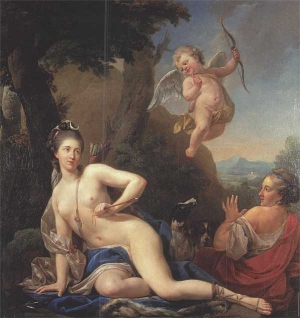
When Steven Brooks, a collector of Old Master paintings, purchased Louis-Michel van Loo’s Allegorical Portrait of a Lady as Diana Wounded by Cupid from Sotheby’s in 2004, he was unaware that the work was once owned by the German war criminal Hermann Goering. After it surfaced that Nazis possibly looted the work, Brooks deemed the painting worthless and decided to sue Sotheby’s for not thoroughly researching the work’s provenance.
The painting’s problematic past was revealed when Brooks tried to sell the painting at Christie’s in 2010. Specialists at the auction house discovered that Goering had purchased the painting in 1939, leading Christie’s to decline the offer to sell Portrait of a Lady on behalf of Brooks. Brooks’ lawsuit claims that Sotheby’s also refused to auction the work and won’t refund the nearly $90,000 he spent on the painting in 2004.
While there is no solid proof that the work was looted by Nazis, the uncertainty surrounding the painting makes it unsalable and in turn, monetarily worthless. Sotheby’s 2004 catalogue lacked any information on the painting between 1906 and 1987 and Christie’s was unable to determine anything other than the fact that Goering once owned the work. It is typical for private dealers to avoid works whose ownership cannot be traced between 1933, when the Nazis came to power, and 1945, when World War II ended, because of potentially problematic provenances.
There are currently no claimants for van Loo’s Allegorical Portrait of a Lady as Diana Wounded by Cupid.
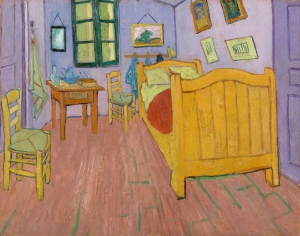
On May 1, 2013 the Van Gogh Museum in Amsterdam will re-open after being closed for months due to ongoing renovations. The exhibition that will inaugurate the newly updated space is Van Gogh at Work, an extensive overview of Vincent van Gogh’s (1853-1890) oeuvre that happens to coincide with the 160th anniversary of the artist’s birth. What the Van Gogh Museum kept quiet until now is that the exhibition will reveal research amassed during an eight-year analysis of the artist’s work.
The project, which was led by scientists at Shell in collaboration with the Dutch Cultural Heritage Agency and curators at the Van Gogh Museum, entailed analyzing hundreds of van Gogh’s canvases, pigments, letters, and notebooks. The research provided previously unknown insights into van Gogh’s temperament and personality. Contrary to popular belief spurred by the artist’s struggles with mental illness, van Gogh was not a manic painter, but painstakingly methodical. The use of an electric microscope and X-ray fluorescence spectrometry revealed that van Gogh used grids to accurately portray proportions and to create precise depth of field in his early landscapes.
Another insight the researchers uncovered involved van Gogh’s pigments. Tests done at the Shell Global Solutions labs revealed that some of the pigments used by van Gogh were chemically unstable and faded prematurely. In particular, scientists discovered that the color of the walls in van Gogh’s seminal painting The Bedroom was inaccurate. Van Gogh had used red and blue paints to create a violet hue but the red faded, leaving behind a much bluer color than he intended.
Beginning in September, the Van Gogh Museum will exhibit two versions of The Bedroom – one from its own collection and one from the Art Institute of Chicago’s collection. Van Gogh painted three versions of his room in Arles between 1888 and 1889 and all three of them have the same blue-hued walls. The presentation will also include a digital reconstruction of what the painting may have looked like when van Gogh first created it.
Van Gogh at Work will be on view through January 12, 2014.
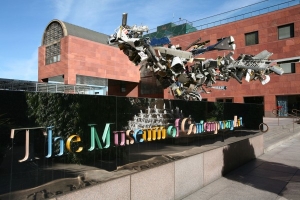
After partnership offers from the Los Angeles County Museum of Art (LACMA) and the National Gallery of Art in Washington, D.C., LA’s Museum of Contemporary Art (MOCA) has decided to remain an independent institution. The museum has been struggling after a spate of financial issues and widespread criticism of its administration and overall direction.
MOCA’s board released a statement on March 19, 2013 explaining, “The board is in agreement that the best future for MOCA would be as an independent institution. The Board understands that this will require a significant increase in MOCA’s endowment to ensure its strong financial standing. We are working quickly toward that goal, while at the same time exploring all strategic options, to honor the best interest of the institution and the artistic community we serve.” There are currently no artists on MOCA’s board after a number of high-profiled artists including John Baldessari, Ed Ruscha, and Barbara Kruger resigned earlier this year.
Earlier this month, LACMA Director Michael Govan offered to raise $100 million for MOCA’s two locations in exchange for the acquisition of the institution. The National Gallery was not interested in an institutional merger but offered to collaborate with MOCA on programming and research initiatives. Eli Broad, one of MOCA’s major benefactors, was in favor of partnering with the National Gallery.
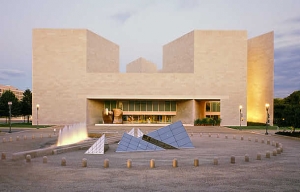
Officials at the National Gallery of Art in Washington, D.C. announced that the museum’s East Building will undergo a $30 million renovation, adding over 12,260-square-feet of exhibition space and a rooftop sculpture garden to the structure. Designed by famed architect I.M. Pei (b. 1917) and opened in 1978, the East Building houses the museum’s collection of modern paintings, drawings, sculptures, and prints as well as study and research centers and offices.
The East Building galleries will gradually close beginning in July and ending in December 2013; they will remain shuttered for approximately three years once renovations begin in January 2014. The project will create two sky-lit Tower Galleries within the East Building, which will be adjoined by an outdoor sculpture terrace. The East Building will continue to house the museum’s modern art collection and may see the addition of a room dedicated to the work of Mark Rothko (1903-1970). Museum officials hope that the additional exhibition space will inspire future donations to the National Gallery’s permanent collection.
The East Building project is part a Master Facilities Plan, which started in the museum’s West Building in 1999 and involved bolstering the building’s infrastructure and renovating its main floor and sculpture galleries. A number of established Washington-based philanthropists are donating $30 million for the East Building project; it is one of the largest gifts the museum has received from private donors in a decade.
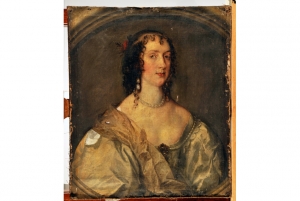
A painting by the 17th century Flemish Baroque artist, Anthony van Dyck (1599-1641), was discovered in a storage room belonging to the Bowes Museum in England. Portrait of Olive Boteler Porter was purchased by the Bowes Museum’s founders, John and Josephine Bowes, in 1866 and has been in the institution’s collection since it opened to the public in 1892.
The painting’s poor condition led museum officials to record it in files as ‘School of van Dyck’ rather than an original van Dyck masterpiece. Relegated to a storage room, the work was discovered when it was photographed earlier this year for a project committed to putting all of the UK’s publically owned oil paintings on a single website. Art historian and dealer, Dr. Bendor Grosvenor, who is working on the digital venture, recognized the wrongly identified painting as an original Van Dyck.
The oil on canvas painting features the expert drapery and coloring often present in van Dyck’s female portraits from the 1630s. Originally thought to be a painting of Queen Henrietta Maria, additional research identified the sitter as Olive Boteler Porter, the queen’s lady-in-waiting and the wife of van Dyck’s friend and patron Endymion Porter.
After being examined by various van Dyck scholars, the painting has been authenticated. The recently restored masterpiece is now on view at the Bowes Museum.
|
|
|
|
|